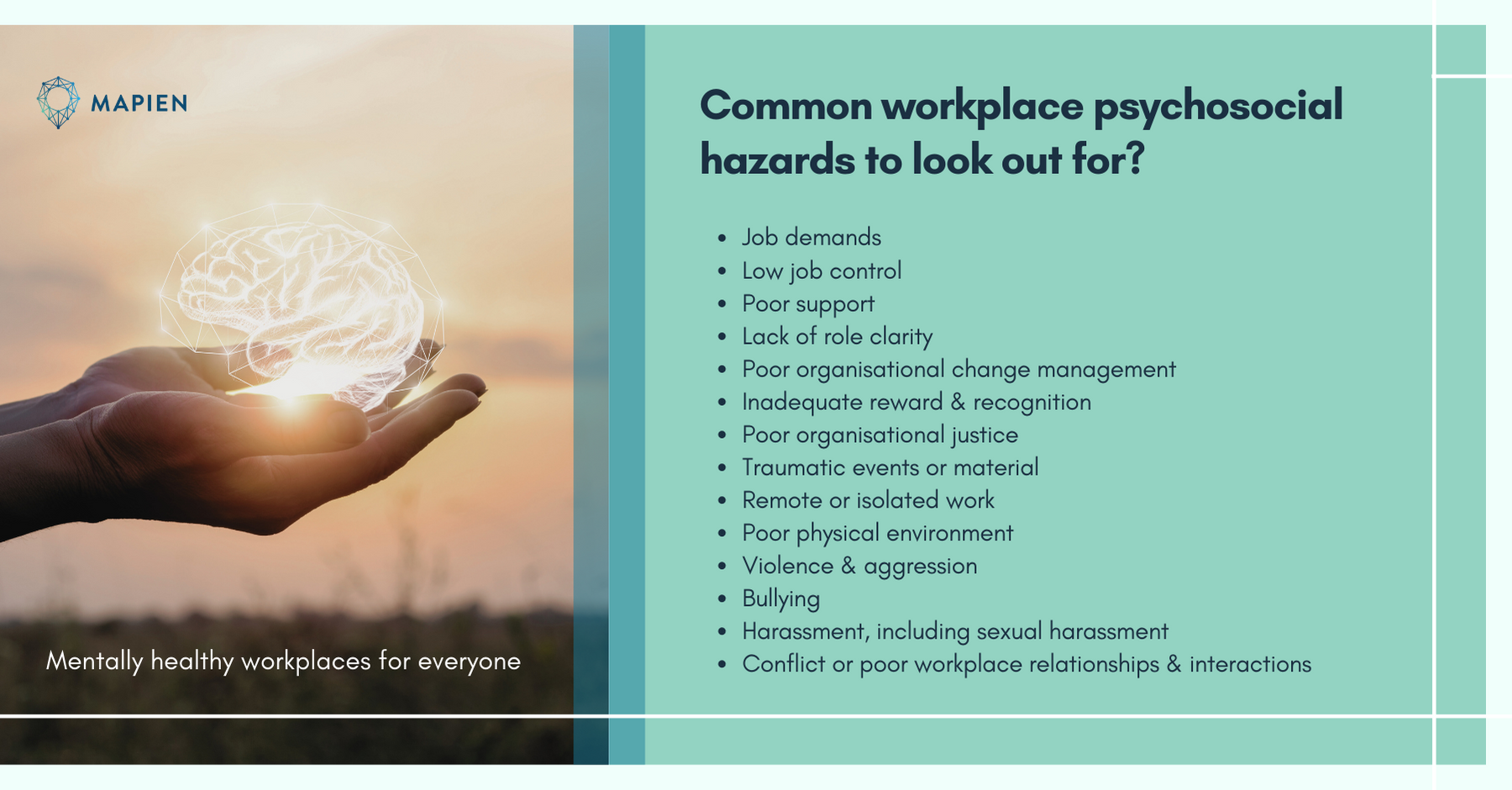
Managing the risks to ensure a psychologically safe workplace
Keeping your workplace psychologically safe
According to Work Safe Australia statistics, psychological health accounts for 9.3% of all serious workplace injury and disease claims.
While psychosocial health has always been considered under the Workplace Health and Safety Act, it has recently been incorporated into the state-based Workplace Health and Safety Regulations, meaning employers are now obligated to consider the assessment and management of those factors that may impact psychosocial health.
Psychosocial hazards can be a worrisome & overwhelmingly grey area. With one in five Australians reporting having experienced a mental health issue in the last year, and two in five leaving a job due to a poor mental health environment in the workplace, it is more important than ever to interpret the grey and create a workplace that allows your people to feel safe and supported.
When employees feel psychologically safe, they are typically more motivated, open minded and comfortable to speak up, share their thoughts and ideas, and take risks.
So, what should you be looking out for?
Psychosocial hazards can cause both psychological harm (such as anxiety, depression, post-traumatic stress disorder (PTSD) and sleep disorders) and physical harm, like musculoskeletal injury, chronic disease, and physical injury following fatigue-related workplace incidents.
There are 14 common psychosocial hazards identified in the Safe Work Codes of Practice, which employers should be looking out for in the workplace.

How can you manage the risks?
Now we know the common hazards which can affect an employee’s psychological health and safety, it’s important to assess and implement risk control strategies to protect your workers, decrease disruption caused by staff turnover and absenteeism, and improve productivity and broader organisational performance.
Mapien’s philosophy for assessing psychosocial risks is based on the process outlined in the Safe Work Australia code of practice and is made up of four stages.
- Identify hazards
Understanding the work environment to find out what could potentially cause harm. - Assess risks
Understanding the nature of the harm the hazard could cause, how serious the harm could be, and the likelihood of it happening. - Control
Implementing effective control measures and solutions for sustainable outcomes. This means either eliminating the risk all together (if reasonably practicable), or implementing control measures to minimise the risks, as well as ensuring those control measures remain effective over time. - Review
This is not a set and forget process. It is important to continually review control measures to ensure they are working as planned, and make changes as required to allow for a long term psychologically safe workplace.
It important to consider leadership and management commitment and to consult with workers across all levels of the business when it comes to the process of managing psychosocial hazards.
Creating a psychologically safe workplace
Our Mapien team integrate their multidisciplinary knowledge, to help you create a safe workplace for everyone. We partner with you to identify, design & implement tailored risk control strategies which create lasting organisational benefits, including improved workplace culture, identifying and minimising risks to prevent stress and burnout, improved workplace safety and reduced injuries and workers compensation claims.
A psychologically safe workplace results in happier, engaged employees and ultimately, boosts team performance.

More information
Click here for Safe Work Australia Code of Practice

